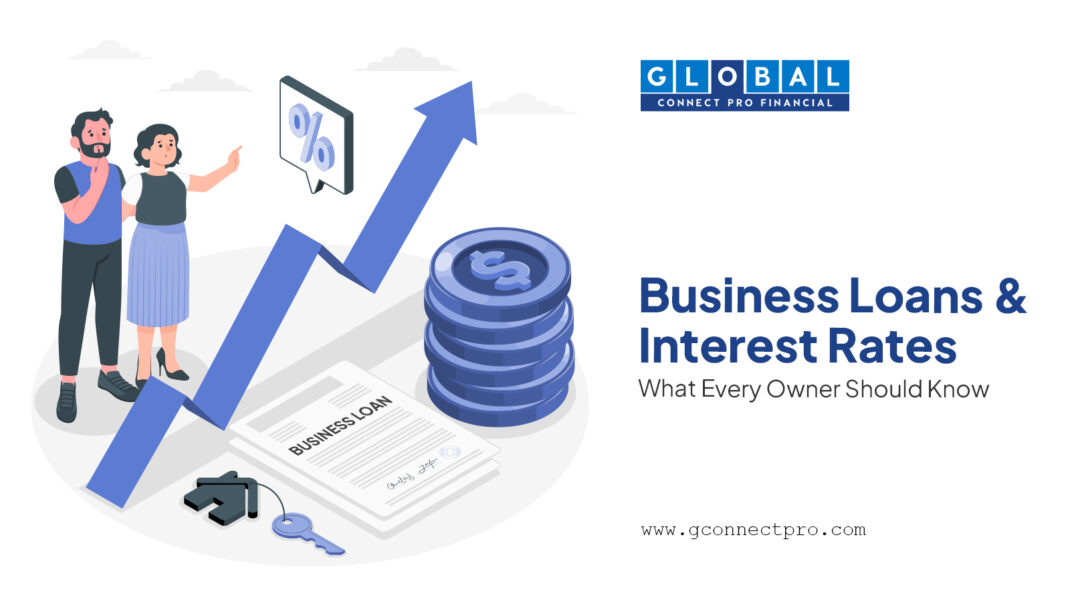The Impact of Interest Rates on Business Loans

Interest rates play a crucial role in business financing. Whether you’re a startup looking for initial capital or an established business seeking funds for expansion, the cost of borrowing is largely dictated by interest rates. Understanding how interest rates affect business loans can help entrepreneurs make informed financial decisions and manage debt effectively. Simply put, the interest rate determines how much extra money you have to pay back in addition to the amount you borrowed.
What Are Interest Rates?
Interest rates represent the cost of borrowing money from a lender. They are typically expressed as a percentage and can be either fixed or variable. When you take out a loan, the lender charges you a fee for letting you use their money. This fee is what we call interest. The interest rate can be influenced by different factors, including the overall economy, inflation, and the policies set by the central bank.
For example, if you borrow $10,000 at a 5% interest rate, you will owe $500 in interest over a year. If the rate increases to 10%, you will owe $1,000 instead. This means the higher the interest rate, the more expensive it is to borrow money.
How Interest Rates Affect Business Loans
1. Loan Affordability
Higher interest rates increase the total cost of a loan, making it more expensive for businesses to borrow money. This means businesses have to pay more every month, which can put a strain on their finances. If a business is already struggling with cash flow, high interest rates can make it even harder to stay afloat. Conversely, when interest rates are low, borrowing money becomes cheaper, making it easier for businesses to invest in growth opportunities such as hiring employees, upgrading equipment, or launching new products.
2. Business Growth and Expansion
When interest rates are low, businesses find it easier to finance expansion projects such as opening new locations, investing in equipment, or hiring more employees. This is because they can take out loans at a lower cost and repay them without significantly affecting their profits. On the other hand, high interest rates may discourage borrowing, slowing down business growth since companies may hesitate to take on debt that comes with high repayment costs.
3. Loan Qualification and Approval
Lenders assess a business’s ability to repay loans based on prevailing interest rates. When rates are high, lenders may tighten their lending criteria, making it harder for small businesses with lower credit scores to qualify for loans. This is because higher rates increase the risk for lenders, so they become more cautious about who they approve for loans. Low interest rates generally lead to more accessible financing options, meaning more businesses can get the funding they need.
4. Fixed vs. Variable Interest Rates
Businesses must decide between fixed and variable interest rate loans:
- Fixed-rate loans maintain the same interest rate throughout the loan term, offering predictability in repayments. This means businesses will know exactly how much they need to pay every month, making it easier to plan their finances.
- Variable-rate loans fluctuate based on market conditions, which means payments can increase or decrease over time. This can be beneficial when interest rates drop but risky when rates rise, as businesses may end up paying much more than they initially planned.
5. Impact on Business Profitability
Interest rates directly affect a company’s financial health. Higher rates mean higher repayment costs, reducing net profits. Businesses with significant debt may struggle to maintain profitability during periods of rising interest rates. For example, if a company has to pay thousands of dollars in interest every month, it leaves them with less money to invest in growth, pay employees, or handle unexpected expenses.
6. Macroeconomic Factors
The central bank’s monetary policy influences interest rates. When inflation is high, interest rates often rise to control economic growth, making borrowing more expensive. Conversely, during economic downturns, interest rates are often lowered to encourage lending and investment. This means businesses need to stay aware of the broader economic environment when planning their borrowing strategies.
Strategies to Manage Interest Rate Fluctuations
- Lock in Fixed Rates – If interest rates are expected to rise, opting for fixed-rate loans can protect against future increases. This ensures that businesses have predictable repayment amounts, making it easier to manage finances.
- Refinance Existing Loans – When rates drop, businesses can refinance their loans to lower interest payments. This means replacing an old loan with a new one that has a lower rate, helping businesses save money in the long run.
- Improve Creditworthiness – A strong credit score and financial history can help secure lower interest rates from lenders. This involves paying bills on time, reducing existing debt, and maintaining a good financial track record.
- Diversify Funding Sources – Businesses can explore alternative financing options, such as lines of credit, grants, or investor funding, to reduce dependency on loans. This helps ensure they have multiple ways to access capital without relying too much on borrowing.
Conclusion
Interest rates have a profound impact on business loans, influencing everything from affordability and loan accessibility to overall business profitability. By staying informed about interest rate trends and adopting proactive financial strategies, businesses can optimize their borrowing decisions and maintain financial stability. Whether rates are high or low, understanding their impact can help business owners navigate the financial landscape effectively. The key is to plan ahead, explore different financing options, and make informed choices that align with business goals. Being financially prepared can help businesses thrive regardless of economic conditions.

